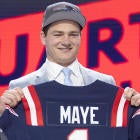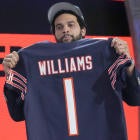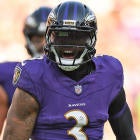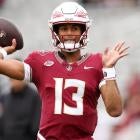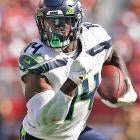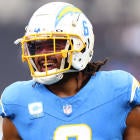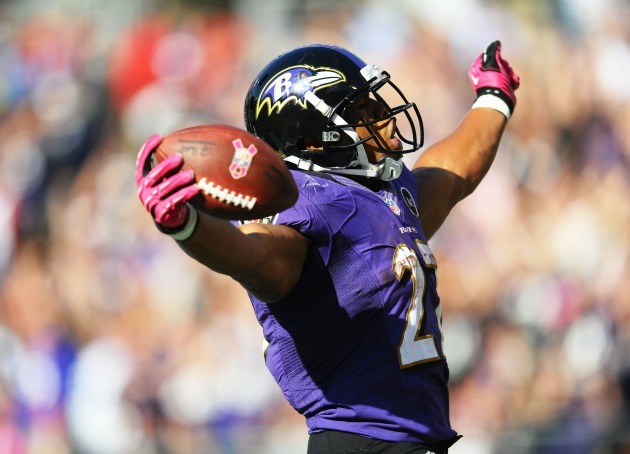 |
| Ray Rice and the Ravens made the most of their time of possession, scoring 24 points in about 20 minutes against Dallas on Sunday. (US Presswire) |
The Cowboys’ offense did nothing fancy against the Ravens on Sunday.
Although Baltimore ultimately edged Dallas 31-29, the Ravens were dominated by the Dallas offensive line. Making matters worse, the defensive line was beat with single blocks. Dallas rarely trapped or pulled, meaning the Cowboys manhandled Baltimore's defensive line and linebackers one-on-one.
Conversely, the Ravens’ offense was able to establish a balance on its scoring drives. It possessed the ball only 19:57 but made the most of it, scoring 24 of its 31 points.
Here's a look at how Baltimore fared upon further review:
What looked good?
- LT Michael Oher had a tremendous bounce-back game after struggling against Kansas City. Oher held his own against Cowboys OLB DeMarcus Ware and made him a nonfactor in the pass rush. The one sack Ware had came when LG Bobbie Williams was beat by his defender and was pushed back into Oher. This freed Ware to sack Joe Flacco. Other than that play, the left side of the line did an outstanding job neutralizing one of the NFL’s premier pass rushers.
- Baltimore’s secondary is much better than the numbers show, even without the injured Lardarius Webb. If the Ravens could generate a consistent rush, their defensive backs are usually in good position to make plays. CB Cary Williams’ third-quarter play, for example, when QB Tony Romo had to roll to his right to try to find a receiver. Ravens OLB Dannell Ellerbe found a lane to rush Romo, forcing an errant throw. Williams was in position to make the play, which led to a Baltimore scoring drive. If the Ravens can get after the quarterback more, the secondary will thank them with more turnovers. Without a consistent rush, it won’t matter who’s in the secondary.
- Special teams coordinator Jerry Rosburg probably grinned from ear-to-ear when he reviewed the film of Jacoby Jones’ 108-yard kickoff return for a touchdown. For starters, CB Corey Graham gave the first block to get Jones to the next level of defenders. From there, S Sean Considine and RB Anthony Allen opened a gaping hole for Jones to run through. After that, it was smooth sailing for Jones, who sprinted toward the end zone. For the first five weeks of the season, WR Deonte Thompson had been returning kicks. The Ravens made the decision to go with Jones against Dallas and the move paid huge dividends.
What didn't look good?
- The run defense didn’t adjust well all game. The Cowboys lined up and ran the ball down Baltimore’s throat, echoing the days of Woody Hayes and Bo Schembechler. It would be one thing if Dallas designed something schematically impressive. But the offense lined up, identified defenders and blocked them in one-one-one situations. In doing so, the Cowboys rushed for 227 yards in old-school, 3-yards-and-a-cloud-of-dust fashion. Watching live, it looked bad. Watching the tape, you could see a simple game plan blowing the Ravens back off the ball, making it look worse.
- In addition to the interior’s problems against the run, the outside linebackers didn’t do a good job setting the edge. DeMarco Murray and Felix Jones ran a lot of power plays and isolations off each tackle without a Ravens outside linebacker keeping them contained. A lot of edge runs came early, which then opened lanes up the gut. The rushing onslaught lasted all game, showing that Baltimore has a lot of issues to work out before traveling to Houston on Sunday.
What is inconclusive?
- In spot duty, CBs Graham and Chykie Brown filled in fairly well for Webb and Jimmy Smith, who had a minor groin tweak toward the end of the Dallas game. Although they looked fine against the Cowboys, how will they look the rest of the season? Losing Webb is a major blow for an already struggling defense. Graham and Brown, and possibly rookie CB Asa Jackson, will need to step up.
Follow Ravens reporter Jason Butt on Twitter: @CBSRavens and @JasonButtCBS.












